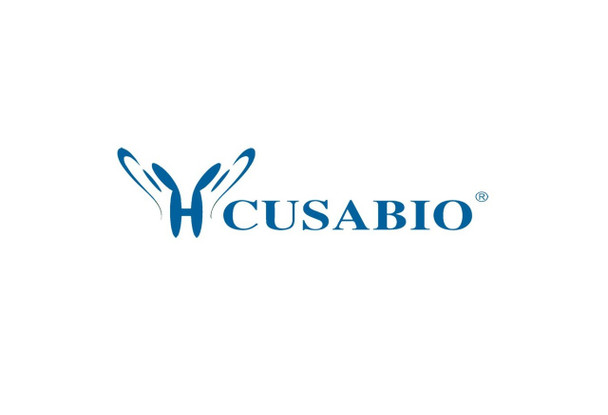Cusabio Human Recombinants
Recombinant Human Receptor-interacting serine/threonine-protein kinase 3 (RIPK3) | CSB-BP897497HU
- SKU:
- CSB-BP897497HU
- Availability:
- 28 - 38 Working Days
Description
Recombinant Human Receptor-interacting serine/threonine-protein kinase 3 (RIPK3) | CSB-BP897497HU | Cusabio
Alternative Name(s): RIP-like protein kinase 3 Receptor-interacting protein 3
Gene Names: RIPK3
Research Areas: Cell Biology
Organism: Homo sapiens (Human)
AA Sequence: MSCVKLWPSGAPAPLVSIEELENQELVGKGGFGTVFRAQHRKWGYDVAVKIVNSKAISREVKAMASLDNEFVLRLEGVIEKVNWDQDPKPALVTKFMENGSLSGLLQSQCPRPWPLLCRLLKEVVLGMFYLHDQNPVLLHRDLKPSNVLLDPELHVKLADFGLSTFQGGSQSGTGSGEPGGTLGYLAPELFVNVNRKASTASDVYSFGILMWAVLAGREVELPTEPSLVYEAVCNRQNRPSLAELPQAGPETPGLEGLKELMQLCWSSEPKDRPSFQECLPKTDEVFQMVENNMNAAVSTVKDFLSQLRSSNRRFSIPESGQGGTEMDGFRRTIENQHSRNDVMVSEWLNKLNLEEPPSSVPKKCPSLTKRSRAQEEQVPQAWTAGTSSDSMAQPPQTPETSTFRNQMPSPTSTGTPSPGPRGNQGAERQGMNWSCRTPEPNPVTGRPLVNIYNCSGVQVGDNNYLTMQQTTALPTWGLAPSGKGRGLQHPPPVGSQEGPKDPEAWSRPQGWYNHSGK
Source: Baculovirus
Tag Info: N-terminal 10xHis-tagged and C-terminal Myc-tagged
Expression Region: 1-518aa
Sequence Info: Full Length
MW: 60.9 kDa
Purity: Greater than 90% as determined by SDS-PAGE.
Relevance: Essential for necroptosis, a programmed cell death process in response to death-inducing TNF-alpha family members. Upon induction of necrosis, RIPK3 interacts with, and phosphorylates RIPK1 and MLKL to form a necrosis-inducing complex. RIPK3 binds to and enhances the activity of three metabolic enzymes: GLUL, GLUD1, and PYGL. These metabolic enzymes may eventually stimulate the tricarboxylic acid cycle and oxidative phosphorylation, which could result in enhanced ROS production.
Reference: "Identification of RIP3, a RIP-like kinase that activates apoptosis and NFkappaB." Yu P.W., Huang B.C.B., Shen M., Quast J., Chan E., Xu X., Nolan G.P., Payan D.G., Luo Y. Curr. Biol. 9:539-542(1999)
Storage: The shelf life is related to many factors, storage state, buffer ingredients, storage temperature and the stability of the protein itself. Generally, the shelf life of liquid form is 6 months at -20?/-80?. The shelf life of lyophilized form is 12 months at -20?/-80?.
Notes: Repeated freezing and thawing is not recommended. Store working aliquots at 4? for up to one week.
Function: Essential for necroptosis, a programmed cell death process in response to death-inducing TNF-alpha family members. Upon induction of necrosis, RIPK3 interacts with, and phosphorylates RIPK1 and MLKL to form a necrosis-inducing complex. RIPK3 binds to and enhances the activity of three metabolic enzymes
Involvement in disease:
Subcellular Location: Cytoplasm, cytosol, Cell membrane, Mitochondrion
Protein Families: Protein kinase superfamily, TKL Ser/Thr protein kinase family
Tissue Specificity: Highly expressed in the pancreas. Detected at lower levels in heart, placenta, lung and kidney. Isoform 3 is significantly increased in colon and lung cancers.
Paythway: TNFsignalingpathway
Form: Liquid or Lyophilized powder
Buffer: If the delivery form is liquid, the default storage buffer is Tris/PBS-based buffer, 5%-50% glycerol. If the delivery form is lyophilized powder, the buffer before lyophilization is Tris/PBS-based buffer, 6% Trehalose, pH 8.0.
Reconstitution: We recommend that this vial be briefly centrifuged prior to opening to bring the contents to the bottom. Please reconstitute protein in deionized sterile water to a concentration of 0.1-1.0 mg/mL.We recommend to add 5-50% of glycerol (final concentration) and aliquot for long-term storage at -20?/-80?. Our default final concentration of glycerol is 50%. Customers could use it as reference.
Uniprot ID: Q9Y572
HGNC Database Link: HGNC
UniGene Database Link: UniGene
KEGG Database Link: KEGG
STRING Database Link: STRING
OMIM Database Link: OMIM









